This massive shift isn’t just a trend; it’s a response to a changing digital landscape. With Google removing third-party cookies and new data privacy laws taking effect, gathering information directly from your audience has become more critical than ever. But while first-party data is the gold standard, what about second- and third-party data? Do they still have a place in your strategy?
In this post, I’ll break down the differences between these three types of data and explain which one is best for your business. I’ll also share how real experts are building a winning data strategy, from gathering the right information to putting it into action.
Table of Contents
- What is first-party data?
- Why is first-party data important?
- First-Party Data Use Cases
- First-Party Data Strategy
- Second-Party Data
- Third-Party Data
Essentially, you or your business are the first party to collect unique information about your audience directly from your audience. First-party data can include things like:
- Demographic information.
- Behaviors or actions taken across your website, app, and/or product.
- Data in your CRM.
- Social media conversations.
- Subscription-based emails or products.
- Survey data.
- Customer feedback.
- Customer purchase history.
- Online chat transcripts.
How is first-party data collected?
First-party data collection is the basis of building a direct relationship with your audience. The most common method involves placing tracking pixels on your website, within your product, or across your social media profiles.
These tiny snippets of code act as silent observers, capturing information about user behaviors and actions — like a visitor landing on your site, clicking through to a product page, or engaging with one of your social media posts.
This captured data is then funneled into a Customer Relationship Management (CRM) system or, more commonly today, a Customer Data Platform (CDP). A CDP is a powerful central hub that consolidates all your customer data, giving marketing, sales, and customer success teams a unified view of their audience.
While its main purpose is to aggregate first-party data, a good CDP can also serve as the repository for second- and third-party data. This provides a complete picture for deep analysis.
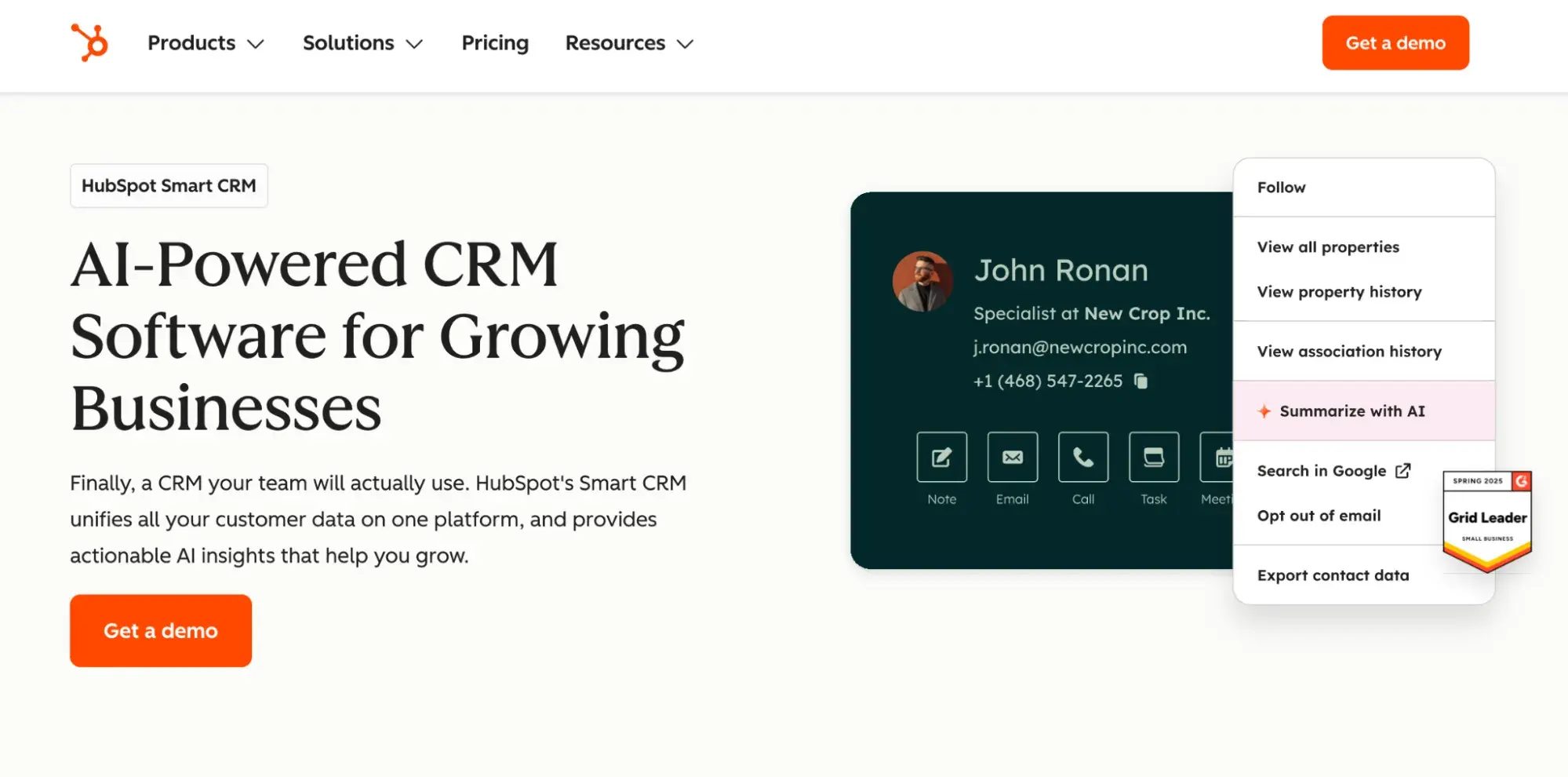
Besides tracking pixels, what other valuable first-party data can you collect? A wealth of it comes from direct interactions with your audience. Think about the conversations you have with your customers, the feedback from surveys you send out, or any information they share with you about their experience. This is all rich, firsthand data you own.
If you’re a content marketer looking for new ideas, instead of just guessing, you can simply ask your clients about any questions they had before they started working with you. Those candid answers are gold. They’re first-party insights that you can then transform into a powerful content strategy, like creating blog posts that directly answer those common questions on your website.
On the other hand, it’s important to remember what doesn’t count as first-party data. If you were to aggregate customer product reviews from a site like Amazon, that would be considered second-party data, as it’s owned by Amazon and you’re getting it from a third party.
Example: Whenever I start working with a new client, I schedule an intro call and ask how they found me. This first-party data helps me focus on the right sales channels and improve my close rate.
Why is first-party data important?
First-party data makes it much easier to keep your audience engaged because you know what they like and what motivates them to use a product or service like yours. This means you can refine your products or processes based on real feedback, rather than just guessing. To help you understand what first-party data brings to the table, I’ve gone through market research and gathered insights from experts. Here’s what I’ve found.
Audience Insights
Take it from someone who’s worked for a customer feedback company — there’s no better way to understand what truly drives your customers than by asking them yourself.
Ryan Jones, marketing manager at SEOTesting, agrees: “First-party data is really a game-changer because it’s data you collect directly from your customers, making it so much more accurate and reliable than anything you’d get from third-party data sources. I think the only third-party source that would come close is a survey company, but even this is still less reliable.”
Privacy Regulations
Data privacy changes and regulations have been a major concern for marketers for several years. HubSpot’s 2025 Industry Trends Report found that 88% of marketers said data privacy changes — like Google Chrome’s third-party cookie phaseout, GDPR, and iOS privacy updates — were keeping them up at night.
Moreover, 21% of the marketers surveyed admitted that gathering data is now harder because consumers are less willing to share personal information. Another 19% also said that analyzing data became harder due to the poor quality of the data they have at their disposal.
Despite these issues, marketers agree that collecting first-party data has never been more important than today. Nearly 3 in 10 marketers told HubSpot that data was a key part of their marketing strategy, and 26% said they needed it to prove ROI of their marketing efforts.
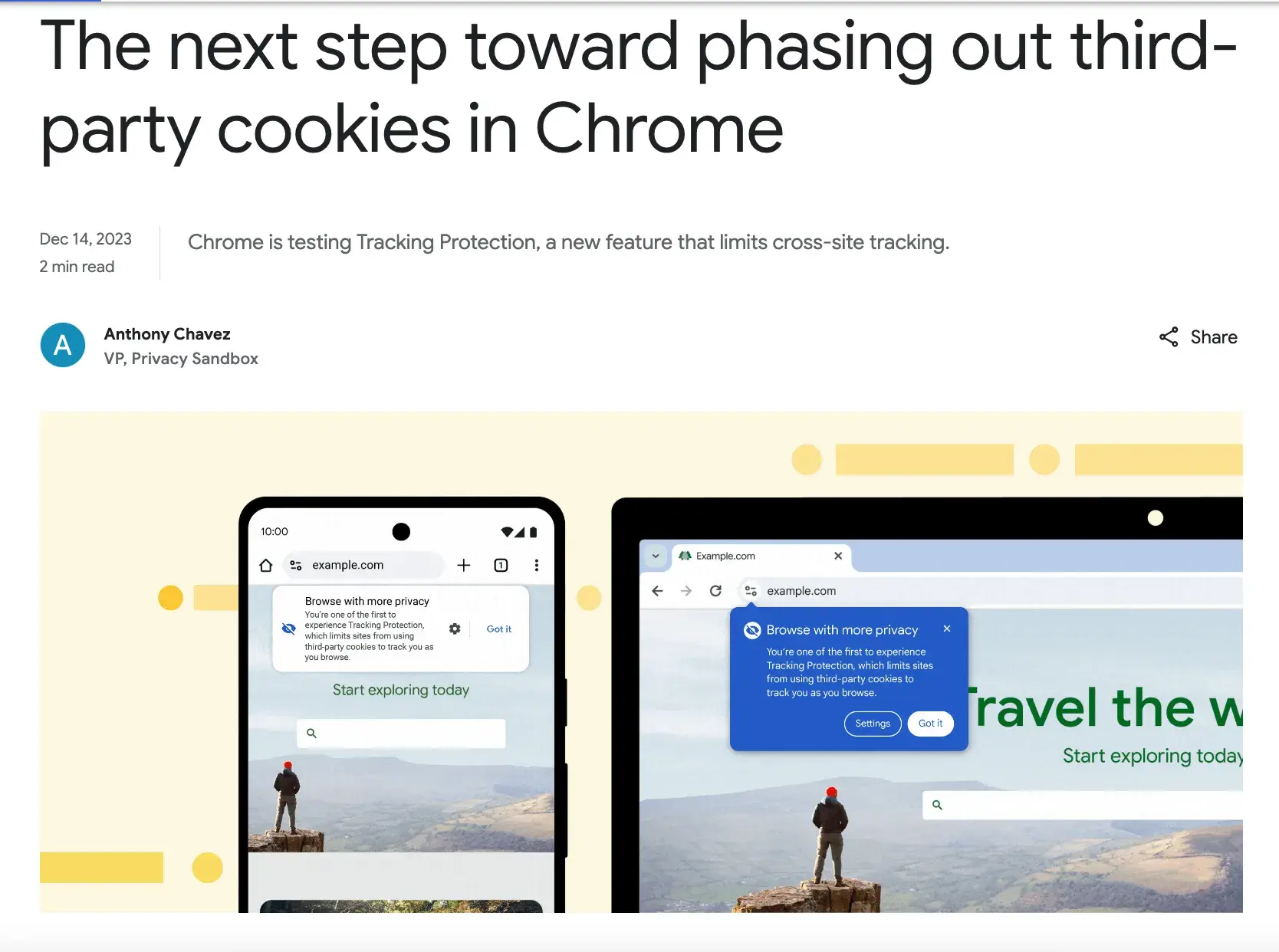
Here’s where SEOTesting’s Jones recommends using first-party data as a way to combat privacy regulations.
"With all the privacy regulations now, first-party data helps you stay compliant while also allowing you to personalize your marketing in a way that truly resonates with your audience. Essentially, it’s the key to building trust with your customers while getting better results from your campaigns,” he said.
Data Accuracy
According to Hristina Stefanova, head of marketing operations at Goose‘n’Moose, first-party data is a cut above third-party data, which often falls short for two main reasons: it’s implied and incomplete.
"What I mean by ‘implied data’ is that it’s not always accurate,” she told me. “Especially when it comes to tracking the geo location of a user, there is a lot of noise. Blame this on Cloudflare and VPNs.”
Like Jones, Stefanova also said that first-party data can help navigate stricter privacy regulations — but from a slightly different angle. She explained that with it, you not only have legitimate permission to collect and use first-party data. You’re also more likely to get accurate, reliable insights.
She said that these regulations can often make data incomplete or inaccurate, so relying on first-party sources helps fill those gaps. “The now legal right of users to reject cookies makes them untrackable, so key characteristics and browsing behavior remain unknown,” Stefanova explained.
First-Party Data Use Cases
We often hear about first-party data being discussed in abstract terms, such as for retargeting, nurturing customers, or powering sales. But what does it look like in action? To find out, I went straight to the source, speaking with industry experts to uncover six real-world examples of how they’re putting their first-party data to work.
Discover new potential marketing areas.
While most marketers use data to measure the success of existing channels, first-party data holds the key to discovering entirely new opportunities. It gives you an unfiltered view of where your audience is already active, often in unexpected places. To see this in action, I spoke with Ryan Jones about SEOTesting’s data strategy. He explained that they use information from their customer sign-up form to help make sure product trials are a success.
“We collect data about what company they are from, their name, etc. But we also ask them where they found out about us,” explains Jones. “This helps us at the end of every month as we can analyze the data, find out what marketing strategies are working for us and what methods aren’t working too well.”
This process goes beyond a simple check on what works and what doesn’t. It also helps the SEOTesting team pinpoint new marketing areas they hadn’t considered before.
He adds, “Recently, we had a few customer sign-ups from a mention in a blog post, so we were able to contact them and do some cross-collaboration, which worked out well for both parties.”
Target segments by geo proximity.
If you market to a local audience, then you know how important precision is. You can move beyond broad campaigns and instead reach the right people at the right moment by knowing exactly where your audience is. This is especially true for businesses with physical locations.
When I spoke to Stefanova, she was in the process of setting up a large Customer Data Management platform for a business with over 15 entertainment locations across the U.K. She shared how she was putting this into practice.
She explained that to successfully attract offline visitors, she realized the most crucial piece of data was a user’s location.
“The critically important first-party data point that I need in order to run those campaigns successfully is knowing the users’ relative location,” says Stefanova. “So from the outset, I am setting up a sign-up process that will be asking website visitors for their outward postcode (city/county level).”
Stefanova told me this approach eliminates the “noise” of inaccurate third-party data.
“With Cloudflare, I see a lot of U.K. web visits as coming from the U.S. or another country — that’s not helpful in my use case at all,” she notes.
In an ideal scenario where most visitors provide their postcodes, Stefanova explains that all campaigns will target segments by geo-proximity. She adds, “For example, campaign X should only reach people within a 20-mile radius from London (as location X is in London). Campaign Y should only reach people within a 20-mile radius from Liverpool (as location Y is in Liverpool).”
Find audience communication preferences.
Have you ever spent hours crafting the perfect email, only for it to land in a spam folder or get buried in a crowded inbox? It’s a frustrating experience that I know too well. But what if the problem isn’t the content but the medium?
Finding out where your audience actually wants to be reached can change everything. I saw this firsthand when I spoke with Joe Fletcher, a marketing consultant at Scaled.
He was working with a client to increase open and click-through rates for their newsletter. After some initial conversations with the client’s customers, they discovered a key insight: A number of them found chatting via text, WhatsApp, and similar channels far more efficient. Because of this, the newsletters were getting overlooked, often sent straight to the “Promotions” tab.
"With the content being valuable, we set up a small test via WhatsApp web business to opted-in users, for which we had a mobile contact. This allowed us to send out updates when we sent newsletters or just start sharing the stories directly with the users,” says Fletcher.
This direct line of communication also allowed them to ask recipients for feedback on the content, which helped fuel ideas for future newsletters.
The results were great. “We had a 67% click-through rate on our articles and drove in 33 conversions from a small list of 250 people, which turned into actionable sales calls,” Fletcher says.
Create personalized customer experiences.
Personalization is no longer a trend but a customer expectation. According to the State of Personalization Report 2024, 56% of consumers are more likely to make a subsequent purchase after a personalized shopping experience. What’s more, 89% of leaders believe personalization will be crucial to their business’s success in the next three years. So, if you aren’t prioritizing personalization, you’re already falling behind.
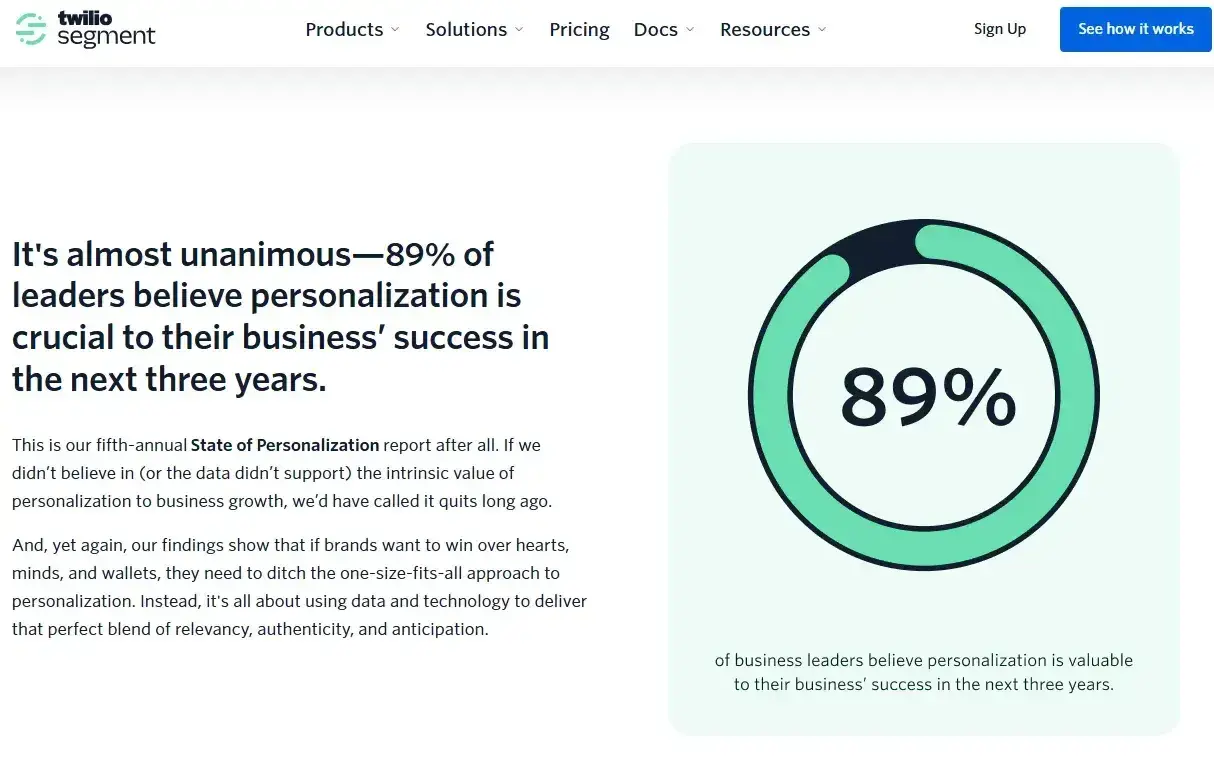
How do you put that into practice? For Reilly James, a marketing manager and ecommerce expert at William Morris Wallpaper, it’s all about using first-party data to drive tailored experiences.
“First-party data is central to understanding our audience and creating more tailored experiences,” says James. “We use them to personalize engagements with our customers, from product recommendations to design inspirations that fit their tastes.”
At William Morris, this means using information like which collections a customer has viewed or the types of patterns they’ve favored to craft more relevant offers and content. According to James, this approach ensures that each interaction feels personal and ultimately fosters stronger customer loyalty.
Run customer reactivation campaigns.
From my experience, it’s a lot easier to win back an old customer than it is to find a new one. In fact, running marketing campaigns that retarget lost, churned, or dormant customers is a cost-effective way to boost revenue. These customers already know your brand, which can significantly shorten the sales cycle. Research backs this up, with the top quartile of SaaS companies winning back one in four churned customers.
Direct-to-consumer brands are also using this approach to their advantage. “Dormant customer data plays a crucial role in shaping our targeted win-back campaigns,” says Adam Tishman, the co-founder of Helix Sleep.
Tishman explains that by analyzing a customer’s purchase history and engagement patterns, they can craft personalized incentives that align with their specific preferences. “This targeted approach significantly boosts the chances of reactivation, as it speaks directly to their past experiences and encourages them to reconnect with our brand,” he says. This method helps bring customers back into the fold by showing them you remember their tastes and still have something valuable to offer.
Shape content to match audience interests.
It can be frustrating to put so much effort into creating content only to have it fall flat. I’ve heard from so many content creators who spend hours on a piece, but it doesn’t get the engagement they hoped for. The secret isn’t always in the quality of the content itself, but in whether it’s truly reaching the right person with the right message. This is a common challenge, especially for B2B marketers, and a perfect use case for first-party data.
According to a HubSpot B2B Buyer Survey, 75% of B2B buyers prefer to gather information on their own rather than speaking with a sales rep. This means your online content is often your only shot to make a good first impression, and if it’s not relevant, they’ll bounce.
So, how do you ensure your content is hyper-targeted to their needs? Spencer Romenco, chief growth strategist at Growth Spurt, shared how his team approaches this.
“In our business, first-party data guides us in shaping content that aligns precisely with audience interests," says Romenco. “We focus on gathering data points like video watch time, engagement rate, and click-throughs, as well as customer behavior on our website.”
Romenco explains that if a lead consistently engages with product demos but doesn’t convert, they use that insight to retarget them with value-driven, tutorial-style videos.
“This creates a more personalized journey and boosts conversion rates without infringing on user privacy,” he notes. This method ensures your content meets the customer exactly where they are in their decision-making process.
First-Party Data Strategy
Now that I’ve covered why first-party data is so important and looked at real-world use cases, it’s time to help you put together your own strategy.
I’ve created a step-by-step list, packed with tips and insights from experts. My goal here is to help you build a strong first-party data strategy from start to finish. Whether you’re creating a strategy from scratch or improving an existing one, you can use this as a practical action plan.
1. Prioritize user trust.
Earlier, Hristina Stefanova, head of marketing at Goose‘n’Moose, shared how she uses first-party data to target audiences based on geographic proximity. Her “ideal scenario” is for most website visitors to share their postcodes, though she realizes that’s not always going to happen.
“I am calling this an ideal case scenario because I feel many people will choose not to share their location, even if it’s aggregated to city level,” she explained.
This example perfectly shows the single-most important thing to keep in mind in first-party data strategy: building trust. I agree with Stefanova, who says that “this remains the major consideration and challenge to overcome when it comes to capturing first-party data.”
What I can tell you from my experience is that there’s no better way to boost your first-party data collection than through being completely transparent with your clients. When you ask them for their details, tell them exactly what purpose you’re going to use that information for. They should also know how disclosing this information will affect them. The experts I spoke to agree with me on this.
Fig Loans CEO, Jeffrey Zhou, told me that customer trust is extremely important in the finance industry. “We developed our plan with a significant focus on compliance, ensuring that we followed requirements such as the Fair Credit Reporting Act. We also openly communicate with clients about how their data is used, which raised retention by 23% as they felt more secure.”
Pro tip: Focus on showing the give-and-take. Make it clear that when you collect customer data, you use it to upgrade products, improve services, and deliver a better overall experience.
2. Account for compliance and regulation.
Data rules are tightening everywhere, and being upfront about how you use people’s information isn’t just a “nice gesture” anymore — it’s the law in many places. Take the EU’s GDPR, for example. It requires businesses to spell out why they’re collecting personal data and what they plan to do with it. And even though it’s a European law, it applies to companies far beyond Europe’s borders because it covers any organization that handles the data of EU residents. Whether that business is based in Berlin, New York, or São Paulo.
Other countries have followed a similar path (for example, Brazil’s LGPD and Australia’s privacy laws). They all focus on giving people clear rights: things like knowing what data is held on them, correcting mistakes, asking for deletion, and giving (or refusing) consent. In the U.S., California’s CCPA and CPRA go a step further, letting residents see their data, delete it, or opt out if companies want to share or “sell” it.
The experts I spoke with made one thing clear: Privacy and compliance have to come first when you’re building a first-party data strategy. As SEO Testing’s Ryan Jones explained, “First, you have to make sure you are ticking all the boxes when it comes to privacy and compliance. People need to know how you are going to use their data, and you need to have their consent to collect any data from them.”
Pro tip: A well-written privacy policy lays out how you gather, keep, and use customer data — and it helps you stay compliant with the rules. Make sure it’s easy for people to find and read.
3. Set clear goals.
Growth Spurt’s Spencer Romenco is right when he says that “it’s important to map out clear data collection goals from the start when crafting a first-party data strategy.”
I’ve found that without a clear direction, it’s easy to collect data just for the sake of it, without any real strategy guiding your efforts. That’s why I believe the first step in setting meaningful first-party data goals is understanding the role of trust, transparency, and compliance — in other words, why the foundations we covered in steps one and two matter.
For those who are just starting out, I recommend taking a page from Romenco: Start by identifying which metrics actually tie back to your business objectives.
I also like the approach Riken Shah, founder and CEO of OSP Labs, takes when working with first-party data from providers and medical device manufacturers. He encourages asking yourself three essential questions:
- Why do I need this data?
- How will I use it?
- What outcome am I aiming for?
Example: Fig Loans’ Jeffrey Zhou shared a good example of how his company established why they gather data.
“When we launched, our primary goal was improving loan repayment rates,” he explained. “We evaluated behavioral data such as payment history and user interactions to personalize loan terms.” Zhou stated that the team found borrowers who enabled autopay were 25% more likely to repay on time. “So, we promoted that option by lowering fees,” he concluded.
4. Audit existing data.
Your first-party data strategy wouldn’t be complete without deciding what to do with the data you already have. Chances are, there are valuable insights buried in your existing data that you haven’t tapped into yet.
Auditing your current data does more than “just” uncover hidden opportunities. It also shows you what’s missing, so you know what to focus on to fill your informational gaps.
Now, I must also mention so-called data hygiene, i.e., making sure your data is clean and reliable. It’s essential not only during your audit but as you continue collecting new data.
Helix Sleep’s Adam Tishman told me that, when you develop a strategy, you should treat data accuracy as “everything.”
He said, “Having clean, up-to-date data removes guesswork and inefficiencies, which means I can segment customers effectively and tailor communications to their real behaviors and preferences.”
This way, every insight you pull becomes more actionable, and every decision you make becomes smarter.
Pro tip: Data quality software can make a big difference in keeping your information accurate, organized, and manageable.
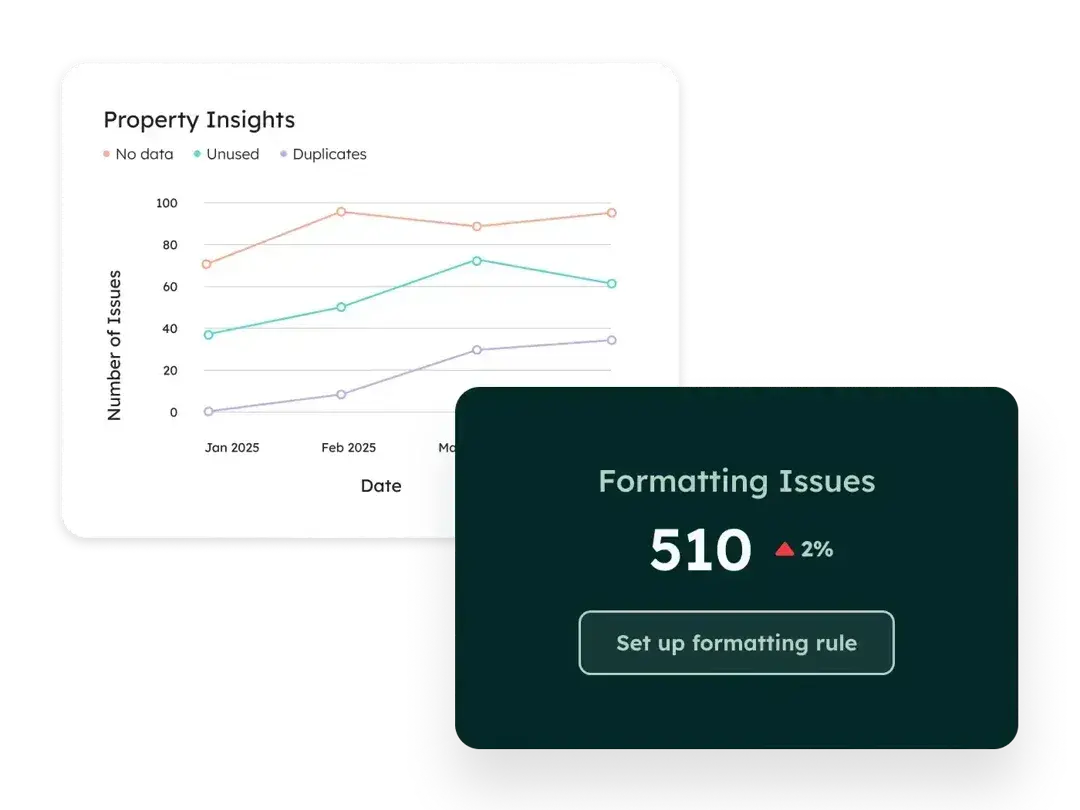
Keep your data clean with HubSpot’s Data Quality Software
5. Map out critical data touch points.
When you start building your first-party data strategy, it’s easy to feel like you need to collect everything. But a more effective approach is to be intentional and focus on the data that truly matters.
Gal Cohen, business development leader at JDM Sliding Doors, knows this firsthand. His team uses first-party data to get a direct line of sight into what customers are telling them. This could be anything from the specific problems they’re having with their doors to odd repair requests or feedback on the service team.
Cohen said that to build their strategy, they chose a few key data points that would directly improve their customer interactions. He explains that this could mean identifying the most frequent issues clients experience or simply recording any special requests they mention during a service call.
“These data points don’t need to be complicated,” he adds. “The goal is just to gather relevant information that helps us better understand and respond to what our clients need. Starting with a small, focused set of data points makes it easier to track and keeps things straightforward for the team.”
6. Collect and analyze data.
You’ve probably heard the saying “garbage in, garbage out.” The same applies to your data strategy. It’s not about collecting every piece of information you can; it’s about being strategic. Ryan Jones from SEOTesting recommends focusing on gathering only the data “that’s actually useful” to make better business decisions.
Jones also warns that the customer experience should not be forgotten. “Collecting data should feel natural, not invasive, so keep it simple and ensure you’re using the data to improve their experience, not just for your benefit,” he adds.
Beyond the initial collection, the real value comes from analysis. Rob Stevenson, the founder of BackupLABS, emphasizes this point: “It’s not just about collecting data; the real value lies in analyzing it to extract actionable insights.” He explains that his team utilizes tools like Google Analytics to gain a deeper understanding of user behavior, enabling them to tailor product features and marketing messages in real-time.
Nicky Watson, founder of Syrenis, agrees. “Don’t collect data for data’s sake. You need to find ways to make the request at the right time, whether it’s when they view a certain page or after a certain number of visits. You can also use progressive profiling tools to ask for additional information without feeling intrusive, that collect specific data points that can then be used to improve the user experience through personalization.”
Pro tip: Jones recommends making sure you have the right tools in place to manage and analyze your data effectively. “Using a good CRM or CDP will make it easier to use what you’re collecting.” (I might be biased, but I highly recommend HubSpot’s Customer Platform, which is built with customer connection in mind!)

Start using HubSpot’s Customer Platform to collect, analyze, and organize your data.
7. Establish a data governance framework.
Ever feel like you’re trying to keep up with an avalanche of information? That’s what it’s like when an organization is drowning in data without a plan. It’s no surprise, then, that 40% of data leaders report data privacy and governance as the biggest obstacles to their strategy. Without a clear framework, that mountain of information can quickly become a liability.
So, what can companies do about it? Create a solid data governance framework.
Think of it as the rulebook for your data. It’s an internal system that guides how you collect, store, process, and ultimately dispose of information. This framework helps you organize your data, control who can use it, and ensure its quality remains high. It’s also your key to managing who can access what, all while keeping a close eye on external regulations.
For Rob Stevenson from BackupLABS, the importance of data governance is clear. “Maintaining high-quality data is vital,” he says. “We regularly conduct data audits and clean-up sessions to ensure the accuracy and reliability of our information. Implementing a robust data management infrastructure, like a Customer Data Platform, has helped us centralize and manage this data effectively.”
Pro tip: Don’t just set up your framework and forget about it. Use your data governance policies to train your team. Teach them why governance is so important and outline the steps they need to take to stay compliant, both internally and externally.
8. Take an iterative approach and continuously improve.
Just like your business, your first-party data strategy should never stand still. It’s a living roadmap, not a static plan you create once and forget about. The most successful strategies are the ones that are flexible and ready to evolve as you get more insights and the market changes.
As Stevenson from BackupLABS reminds us, “The landscape of data and consumer expectations is constantly changing.”
That’s why he and his team make a point to stay informed about new trends and technologies, so their strategy always stays relevant. He continues, “For example, we’ve started integrating artificial intelligence to enhance our predictive analytics capabilities, which has opened up new avenues for personalizing user experiences.”
Adam Tishman from Helix Sleep echoes this, emphasizing that consistent refinement is key. “Consistent refinement helps maintain relevance as customer interests and behaviors evolve. This ongoing process allows me to identify patterns, adapt campaigns, and fine-tune targeting, ultimately resulting in stronger engagement and higher conversion rates.”
So, how do you keep your own strategy agile? Here are a few ways I think you can take an iterative approach:
- Test and refine. Don’t just set it and forget it. Use A/B tests to see what resonates with different segments and fine-tune your approach over time.
- Conduct regular audits. Routine quality checks keep your data clean and reliable, which is absolutely critical for personalization efforts.
- Identify bottlenecks. As your data grows, look for any snags in the process and fix them to ensure smooth data management and analysis.
A flexible, iterative approach helps you build a scalable data infrastructure that can grow and adapt with your business for the long haul.
While first-party data is super valuable, it’s not the only piece of the puzzle. Let’s explore second- and third-party data next to see how they can fit into your overall customer data strategy.
For instance, imagine a fitness app teaming up with a popular health supplement brand. The app might share anonymized user activity data with the supplement company, which then uses it to tailor promotions or product recommendations to a similar audience. In this scenario, the supplement brand is using second-party data to reach potential customers more effectively, while both companies gain insights from the partnership.
How is second-party data collected?
One company collects information straight from its customers — things like what they buy, how they use a website, or how they interact with an app — and then shares anonymized or aggregated insights with a trusted partner.
That partner (in this case, that would be your company) can use the data to:
- Target audiences better.
- Fine-tune campaigns.
- Spot new opportunities, absent from your first-party data.
Usually, these exchanges come with agreements to make sure both parties follow privacy rules and don’t violate each others’ customer trust.
How is second-party data used?
First- and second-party data serve similar purposes. In the past, I’ve used both of these types to craft better ads, guide potential customers through the buying journey, and smooth out any friction in the sales process.
I believe that the key advantage of second-party data is the fresh perspective it gives. By looking at insights collected by a trusted partner, I can spot trends or customer behaviors that might not be obvious in my own data. This can reveal new needs, preferences, or opportunities to refine products and services.
That said, my advice is to always treat it as a supplement to your own information — not as your most trusted source. After all, it comes from an external partner rather than directly from your own customers. Still, I’ve been able to use second-party data to add context to my first-party insights.
While third-party data offers a wider view of the market than your own, it isn’t always the most reliable source. Since it isn’t collected directly from your customers and is also available to your competitors, it’s generally not as useful for personalization as first- or second-party data. Still, in my experience, it can be valuable for uncovering new trends and gaining a wider perspective on your industry.
How is third-party data collected?
The collection of third-party data operates on a different scale entirely. Instead of gathering information from your own customers, third-party companies collect data from a massive, often random, sample of people using common methods like surveys, interviews, and feedback forms. This data is then aggregated and sold to other businesses.
The key difference here is that this information doesn’t come directly from your customers, but rather from a broad, general audience. While this method yields a huge amount of data, the results can be unpredictable. I think the information isn’t always useful for your specific business goals since it lacks the direct customer connection that makes first- and second-party data so valuable.
How is third-party data used?
I know it’s tempting to use third-party data because it’s so widely available and offers a massive scale. But relying on it entirely would be a big mistake. It lacks the depth and quality of first- and second-party data, making it a poor substitute for your own direct insights.
Instead, think of third-party data as a compass, not a map. I recommend first analyzing your first-party data for trends and patterns in customer behavior. Once you have a clear understanding of your own audience, you can then use third-party data to confirm your findings on a larger scale.
By comparing your first-party insights with the broader third-party data, you can see if the behaviors you observed align with a wider marketplace. It’s a way to validate your internal findings and discover if a trend is unique to your customers or a reflection of a larger market shift.
Making Data Work for You
I’ve found that collecting information about your audience and clients is one of the best ways to truly understand their needs and preferences. When I know what matters to them, I can serve them better — and that naturally helps my business grow.
For me, first-party data is always the top priority. It’s the most valuable type of data because it comes straight from my own customers and directly reflects my business context. Its accuracy and relevance are unbeatable, so I make sure it forms the foundation for every data-driven decision I make.
That’s not to say I don’t believe in second- and third-party data — quite the contrary. They can help brands get a fuller picture, fill informational gaps, and uncover new growth opportunities.
My final piece of advice? Whatever data you gather — and wherever you collect it — make it a priority to maintain your customers’ trust and follow privacy rules. Doing so doesn’t just keep you compliant; it also helps build long-term relationships with clients. And that’s what truly supports sustainable growth.
Editor's note: This article was originally published in October 2018 and has since been updated for comprehensiveness.
CDP
.png?width=112&height=112&name=Image%20Hackathon%20%E2%80%93%20Horizontal%20(24).png)

.webp)


![Customer Data Integration: A Complete Guide [Expert Tips & Examples]](https://53.fs1.hubspotusercontent-na1.net/hubfs/53/customer-data-integration-1-20241218-9529716.webp)
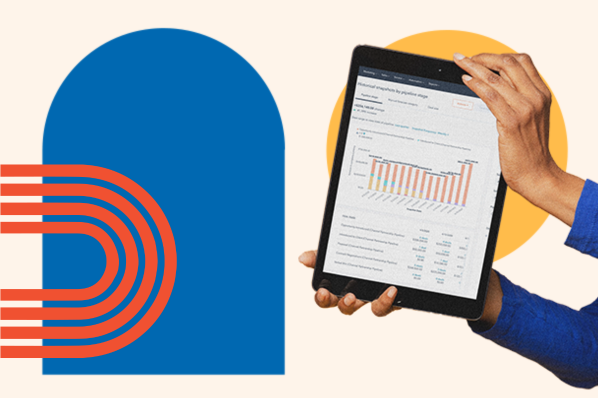





![What Is an Identity Graph? [The Plain-English Guide]](https://53.fs1.hubspotusercontent-na1.net/hubfs/53/identity-graphs.jpg)